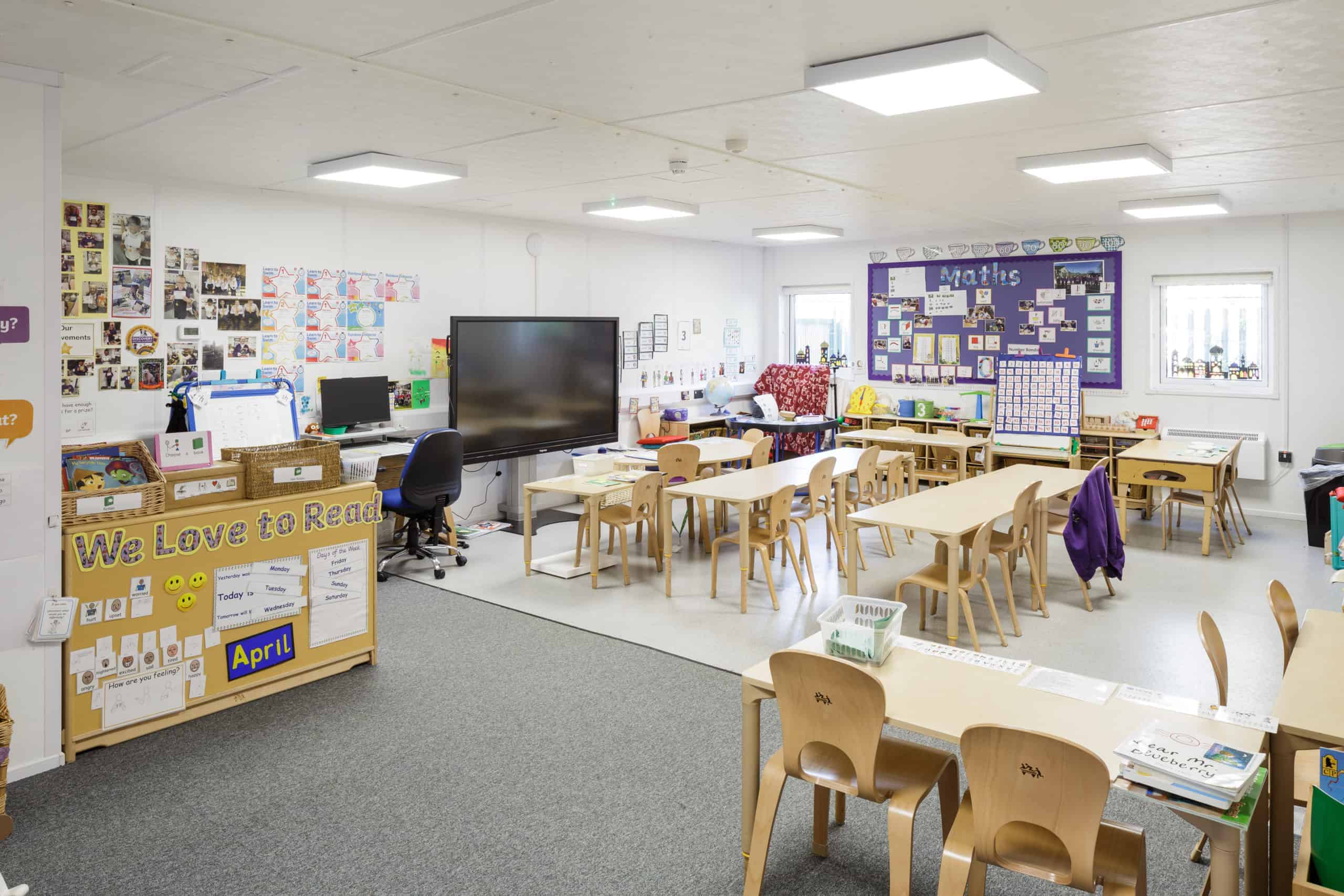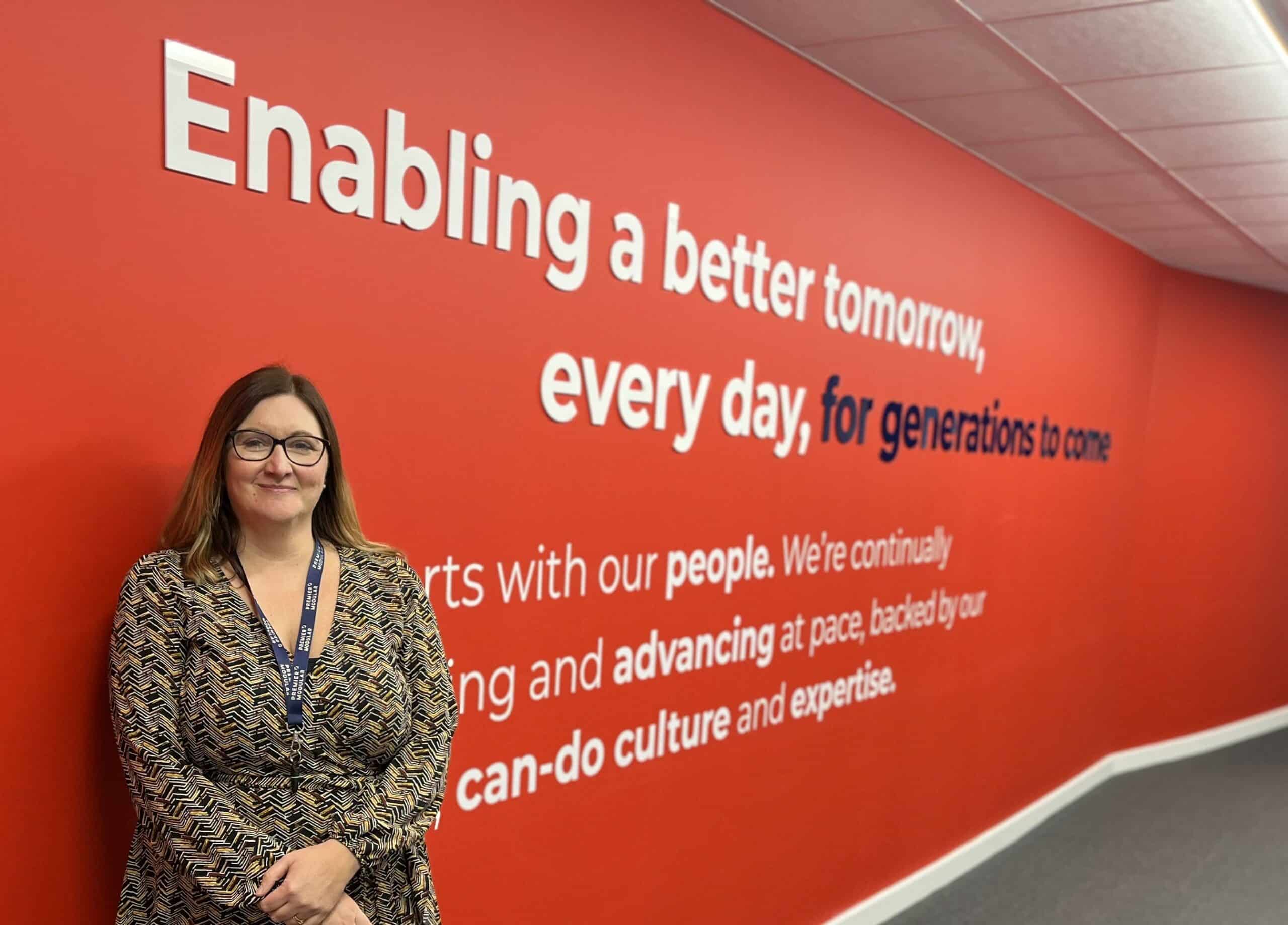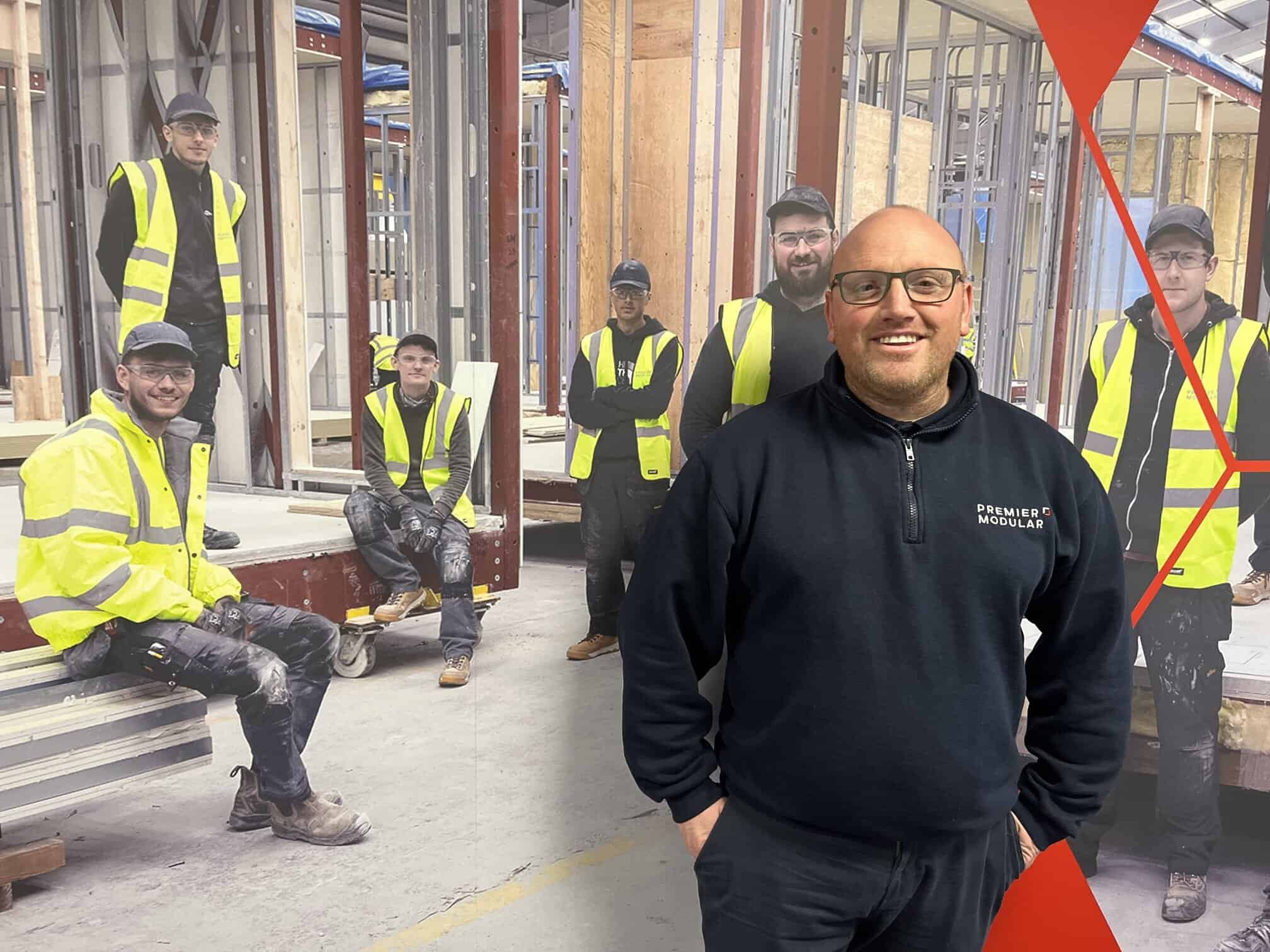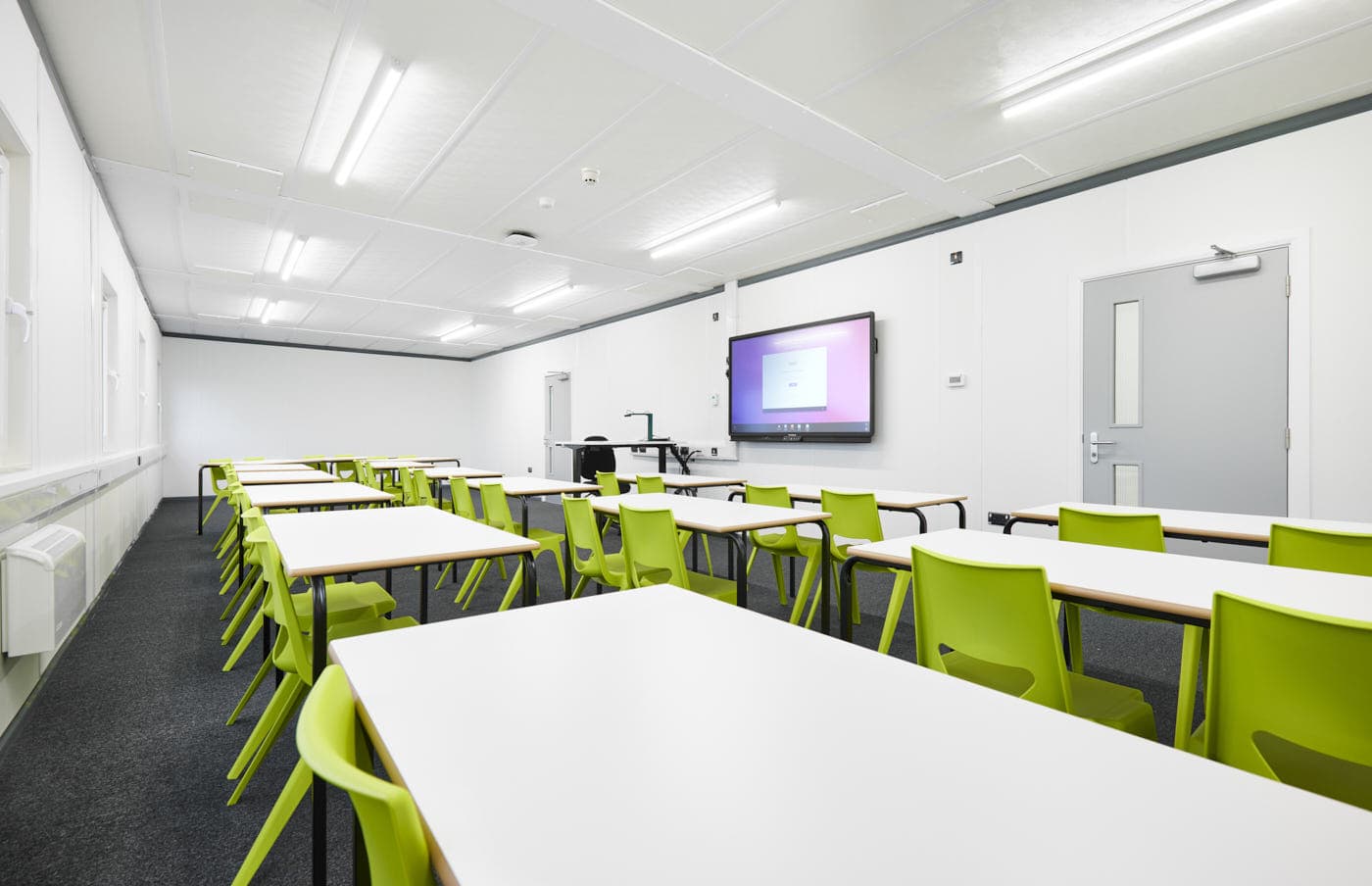As demand for additional educational space continues to increase, more decision makers are looking to long and short term rental as a solution for high quality fast-tracked buildings.
Mark Rooney, divisional director for Premier Modular’s rental business says, “Many educational institutes we speak with need additional space in the short-term, for example, when they’re upgrading current buildings. Our buildings provide all the comfort of a permanent building but they’re able to ‘send it back’ when it’s no longer needed.
“Installations are meticulously planned to ensure children’s safeguarding and keep disruption to teaching to a minimum, whether that’s by installing at weekends or during term breaks.”
Education providers are also turning to reusable, temporary buildings to dramatically reduce their carbon footprint.
Specialised solutions
From decant classroom blocks and extensions to existing facilities, design-led offsite construction provides simple pathways to solutions. Premier’s fully compliant, future-proofed, modular facilities, support a range of education building requirements including temporary classrooms, modular classrooms and portable classrooms.
Brambles School needed temporary educational space for children with special educational needs (SEN) whilst their permanent academy was being built.
- Efficiency
In just eight weeks, a purpose-built, therapeutic environment was designed and installed, compromising:
- Complex groundworks including landscaping and drainage
- Five modular classrooms with sensory areas
- Cleaning facilities
- Changing rooms
- Full M&E including bespoke toilets with automated basins
- Playground canopy
Minimal disruption
Works took place over the summer holidays and weekends so that the facility was ready for the start of the September term.
The local community was concerned about delivery and cranage on the site. Premier worked with the school to allay concerns by proactively communicating with the community.
Reducing environmental impact
Incorporating modular methods into the development of net zero and low carbon buildings achieves Premier Modular’s goal of increasing the sustainability of its solutions.
An offsite approach ensures fewer vehicle movements to site, as well as the use of low carbon products, materials and technology – all reducing Premier Modular’s (and its clients’) environmental impact.
TEDI-London, Canada Water, required a temporary bespoke facility for the next seven years to support its vision for transformative engineering education, until it can relocate to a permanent home.
Sustainability
The modular unit provided many environmental project benefits, including:
- Modular units that can be reused or recycled when the Institute relocates
- Lightweight steel-frames, with an offsite system to avoid the need for intrusive deep pile foundations
- Zero waste to landfill due to offsite construction.
Working with internationally renowned architects Hawkins/Brown, the architectural framework was developed during the pre-construction stages. As the timber cladding required precise setting out, the amount of material used was minimised. The spacing of the cladding within the upper areas of the structure had wider gaps to reduce the amount of material used.
Energy efficiency
Internally, the temporary building features:
- Low energy LED lighting with PIR sensors
- Highly efficient heating and cooling with the use of air source heat pumps
- Mechanical heat recovery ventilation, integrated with the building management system
- Siberian larch cladding that can be reused or recycled.
This allowed the client and its tenants to be cost efficient, all whilst benefiting from high quality facilities – minimising impact on the environment.
Providing results from start to finish
Temporary educational classrooms and modular school solutions are supported by offering educators a highly flexible range of construction services.
Planning logistics
Keswick School in Cumbria required additional provision to swiftly expand its teaching and toilet facilities. The temporary classrooms needed to be within close proximity to the existing school buildings to ensure staff and students could move quickly between lessons, with ease.
Many things had to be taken into consideration, including protecting the lawned area around the tennis court nearby during the installation of the building. To overcome this, a purpose-built temporary roadway was laid down for vehicles, heavy plant machinery and on site personnel.
The co-ordination of a local road closure was also important to ensure the modules could be transported safely to the school, using cranes safely positioned over existing buildings.
A full, turnkey solution
A full turnkey solution was provided, including all associated groundworks, supplying two teaching blocks consisting of:
- Four fully equipped double classrooms
- A central cloakroom
- Toilet facilities
- Ramps and entrance steps – fully complying with DDA requirements.
By working in collaboration with the school, local authorities and associated contractors, the project was delivered safely, efficiently and within required timeframes and enabled students to continue learning in a high-quality environment.
With a temporary modular solution, the approach recognises the importance of minimising disruption to teaching. When implementing additional temporary classrooms, it’s essential to create an environment that encourages continuous learning.
Collaborating with education providers and local authorities, modular and even portable classrooms can minimise environmental impact at every stage of the building life cycle.
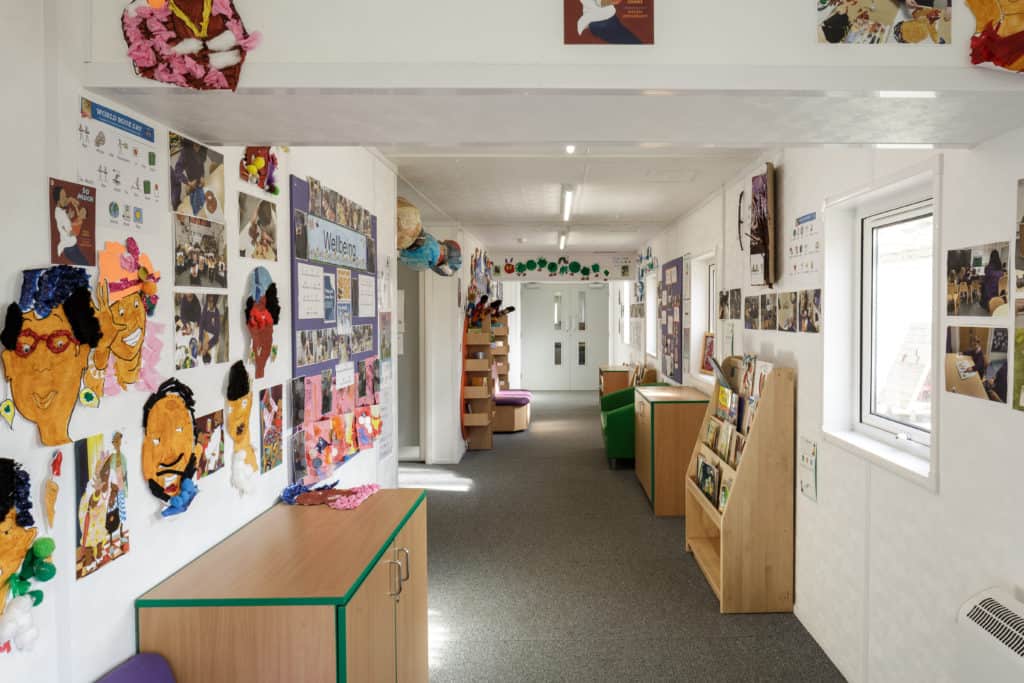
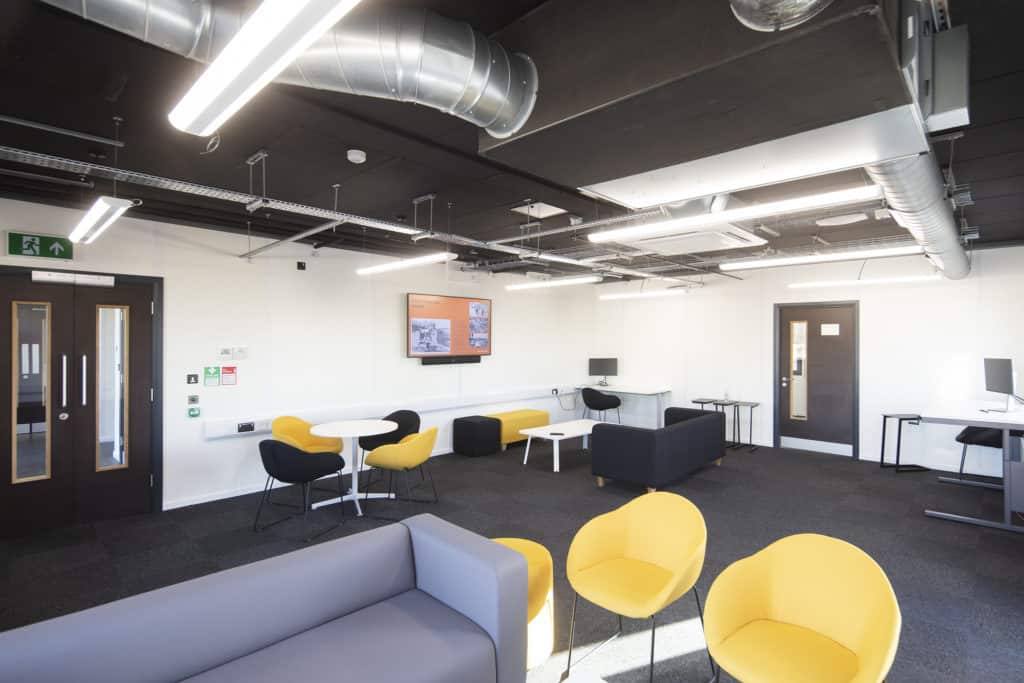
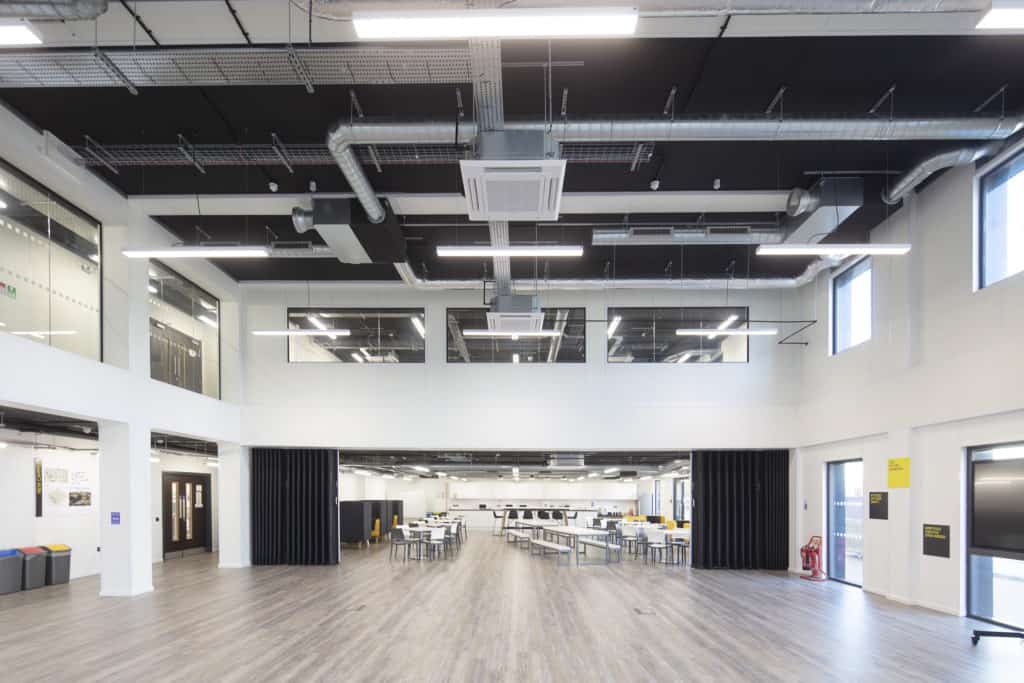
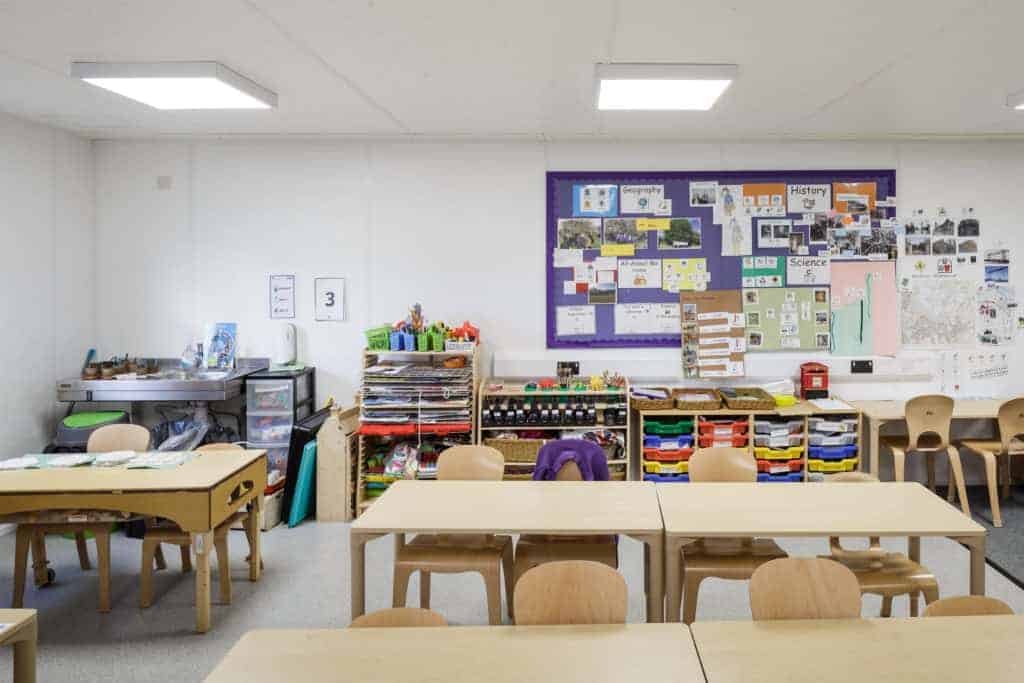
For more information on how our temporary education solutions can meet your specific needs, get in touch or call 0800 316 0888.

